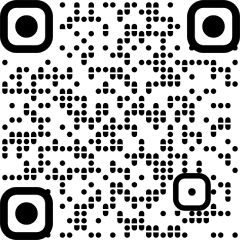Colorado: More people than ever before will go to space in the coming decade. Human spaceflight enters a new era. NASAThe European Space Agency and other government agencies are partnering to develop manned missions beyond the Moon.
Also, these agencies are collaborating with private companies using new technologies to reduce prices. Space exploration,
Companies such as SpaceX, Blue Origin and Sierra Space have developed reusable boosters, autonomous flight systems and lightweight material vehicles to support these deep space missions. Some companies even have ambitions to build private space stations, moon bases or mining operations in the coming decades.
But as these technologies and partnerships make spaceflight more accessible, new challenges are emerging. One of these challenges is maintaining the health and performance of astronaut crews. My team and other researchers and educators at the University of Colorado and around the world are trying to solve this issue.
Emerging Medical Challenges in Space
NASA astronauts are among the most skilled people on the planet, and they are among the healthiest. Astronauts undergo extensive medical and psychological testing, which in one study led to the disqualification of 26% of final-round applicants. This rigorous screening and testing process effectively limits the chance of a medical incident occurring during a mission.
But as space flight becomes more accessible, astronaut crews on commercial missions will become the majority of astronauts in the coming years. Private missions will be shorter and remain in a close orbit around Earth in the near future, but private crews will have less training and more chronic medical conditions than the professional astronauts currently living and working in space.
While the normal physiological changes that occur in the human body under weightlessness conditions have been extensively studied in experiments carried out on the International Space Station, there are no data available on the behaviour of common long-term diseases such as diabetes or hypertension in the space environment.
This boom in the industry is also creating opportunities for long-duration missions to the Moon and Mars. Due to the length of the missions and the distance from Earth, professional astronauts on these missions will experience prolonged periods of weightlessness, causing bone and muscle damage, communication delays ranging from a few seconds to 40 minutes, and extreme isolation lasting from many months to years.
The crew will have to operate autonomously, while facing new hazards such as lunar or Martian dust. Because of the fuel needed for these missions, resources will be limited to a minimum mass and volume.
As a result, mission planners will need to make difficult decisions to determine what supplies are truly necessary, with limited or unavailable resupply opportunities for food, water, and medication. For example, in space, radiation and humidity inside spacecraft can cause medications to deteriorate more quickly and become unavailable or even toxic to crew members.
Crews on the space station are assisted by a flight surgeon in the mission control room, who helps with flight management. medical care Much like telehealth is used on Earth. However, on distant planets the crew will need to perform medical care or procedures autonomously.
In the event of a medical emergency, the crew would not be able to return to Earth. Unlike the space station, where medical evacuation to Earth can occur in less than 24 hours, evacuation to the Moon could take weeks. Evacuation from Mars might not be possible for months or even years.
Simply put, current approaches to medical care in spaceflight will not meet the needs of future commercial and professional astronauts. Researchers will need to develop new techniques and new training approaches to prepare future providers to treat medical conditions in space.
current leader Space Medicine There are specialists in either aerospace engineering or medicine, but rarely do specialists have formal training or a full understanding of both fields. And these disciplines often cannot speak each other’s language, both literally and figuratively.
Training the next generation
To meet the growing demands of human spaceflight, educators and universities are seeking to develop ways to train specialists who understand the limitations of the human body and the constraints of human activity in space. Engineering design,
Some schools and hospitals, such as the University of Texas Medical Branch, offer residencies Training Programs For medical school graduates in Aerospace Medicine.
Other institutions, such as UCLA and Massachusetts General Hospital, offer specialized training programs in space medicine, but currently aim to produce fully trained emergency medicine physicians.
My team at the University of Colorado has created a program that integrates human physiology and engineering principles to train medical students to think like engineers. The program aims to help students understand human health and performance in the space flight environment. It considers these topics from the perspective of engineering design and constraints to find solutions to the challenges faced by astronauts.
One of our most popular classes is called Mars in a Simulated Surface Environment. This class takes students through engineering and medical scenarios in a simulated Mars environment in the Utah desert. Students wear spacesuits and face the challenges of working and providing care in a desolate landscape such as Mars.
Students can find the stress of the simulation to be real, and they learn to apply their combined skills to care for their fellow crew members.
Educational programs like these and others aim to create inter-trained experts who understand both the procedural nature of patient care and engineering design and can integrate the two, whether for space tourists in orbit or as pioneers on the surface of another planet.
A new era of space flight has begun, and these programs are already training experts to make space accessible and safe. (The Conversation) A.M.S.
keeping-astronauts-healthy-in-space-isnt-easy-%e2%88%92-new-training-programs-will-prepare-students-to-perform-medicine-while-thousands-of-miles-away-from-earth-et-healthworld






